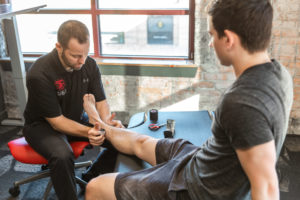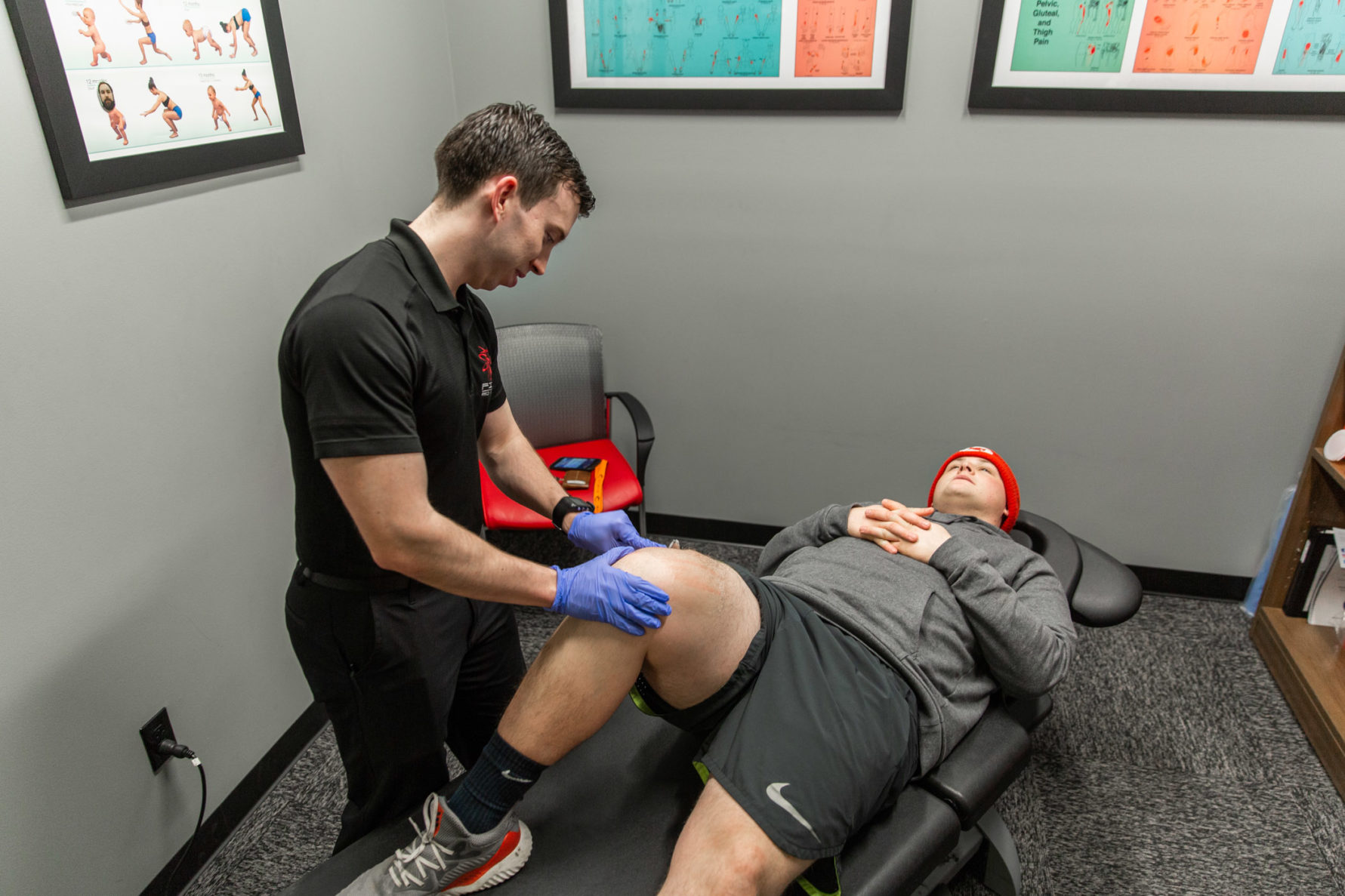
As KT tape and Rocktape continue to gain popularity among athletes and the general population, we decided to revisit this topic. The original post focused on the different uses/effects of taping and can still be found on our website. This post will have a more direct focus on Fascial Movement Taping (FMT) and its effect on movement.

Fascial Movement Taping is an approach to kinesiology taping, which was developed in the 1970’s. While kinesiology taping has been done by manual therapists for over thirty years, its more recent popularity is largely thanks to the exposure it gained in the 2008 and 2012 Olympic games, as well as in sports like CrossFit and many others. Fascial Movement Taping was created as a comprehensive framework of taping for each phase of need, from reducing swelling in an acute injury to helping outcomes in the rehabilitation phase of care and finally as an adjunct to training or competition to improve performance and recovery.
The Human body is meant to move. At least one study has even related the inability to do certain movements with a high mortality rate. Movement problems can be extremely apparent or very difficult to spot. As fatigue, intensity and load become part of the equation, movement problems tend to reveal themselves in more obvious and, unfortunately sometimes spectacular ways.

Fascial Movement Taping allows a mechanical effect from the tape’s stretch and recoil properties in that they create a shearing effect in the skin that can affect movement. However, it is the neurological effect of tape on skin that has the greatest impact on how the body moves. The skin and fascial movements are loaded with sensory receptors that relay pressure, all types of touch and positional information back to the brain. This is one reason pain is masked while taping, as sensory receptors are much faster than pain receptors. The brain then responds to this information to maintain or correct positions and motions. Research seems to suggest that there is a beneficial stimulatory effect to these receptors when skin is taped and that the brain responds with improves movement patterns to areas that have been taped.In the context of movement, additional studies have shown kinesiology tape to have beneficial outcomes on Functional Movement Screen scores.
Call F.I.T. Muscle & Joint Clinic today for a free phone consultation and ask how you might benefit from taping! We except most major insurances and we currently serve Overland Park, Shawnee, Lees Summit, and the surrounding Kansas City metro areas. If you are interested in any of our services please don’t hesitate to contact us. New patients are always welcome at F.I.T. Muscle & Joint Clinic!
Check out these websites for more info regarding taping:



